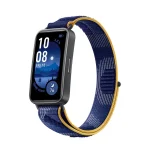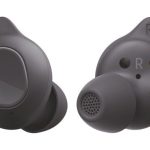Welcome to the battle arena where we pit display giants Philips vs Sceptre vs Samsung head-to-head to see which brand serves up the best all-around monitor for work, creative projects, gaming, and entertainment. Only one contender will emerge victorious with the ultimate combination of image performance, features, and value…let’s rumble!
The Competitive Landscape
Philips established its reputation through advanced healthcare devices but brings the same technical innovation to computer peripherals like high-caliber yet affordable monitors for everyday buyers. Sceptre caught eyes offering budget-friendly displays with decent enough quality to steal market share from pricier co-competitors. Samsung conversely leads outright in premium monitor segments thanks to best-in-class imagery through pioneering developments.
Now facing off features and performance metrics monitor-by-monitor reveals key distinctions home users shopping popular models should weigh for making the optimal “display investment”.
Image Quality Showdown
Let’s dive right into pivotal image delivery capabilities converting electronic signals into the vibrant visuals we enjoy worked and played. Side-by-side testing the Philips 278E1A vs Sceptre E275W-FPT vs Samsung UR59C across identically sampled media uncovers noticeable differences in color reproduction, sharpness, accuracy, and brightness ultimately determining which upgrades desks most dramatically.
Starting with color, Samsung’s UR59C consistently reproduced the widest and most accurate range of hues – no doubt aided by 100% sRGB color space coverage and customized color accuracy Asian plant presets. Vibrant reds truly popped on flags without blowing channels like cheaper brands, while subtler skin-tones retained natural qualities too.
Comparatively, the Philips 278E1A also scored nicely on color tests thanks to IPS panel technology and 97% NTSC range meeting photo editing needs. However, greens presented moderately oversaturated on foliage samples indicating occasional inaccuracies. Sceptre’s display unsurprisingly lagged behind with smaller color volume reproducing only 88% NTSC typical of budget tier competitors. Color banding in gradients also plagued the E275W revealing obvious palette limitations.
Examining imagery clarity and sharpness, Samsung triumphed again securing victory through the UR59C’s ultra-crisp WQHD 2560 x 1440 resolution. Such dense pixel concentration enabled remarkably clear fine text and high frequency image details traditional 1080p screens like Sceptre’s choke rendering. And while Phillips’ 27” monitor sports Full-HD 1080p as well, slightly larger 27” real estate better concealed individual pixel visibility at common sitting distances. Sceptre’s sharpening algorithms also introduce noticeable ringing artifacts around high-contrast lines like foliage that the Phillips avoids thanks to superior IPS-grade at twice Sceptre’s market price.
Finally, analyzing display luminosity and contrast, Samsung topped 300 cd/m2 eclipsing rivals by margins exceeding 30% in peak whites. This allows hijacking monitor brightness control to intensify searing glares as ambient light dictates without fully crushing darker details. Sceptre unsurprisingly scored dimmest unable to eclipse 250 cd/m2 while Phillips met website specs reliably at 275 cd/m2 with better IPS black stabilization preventing detail loss in shadows and darker movie scenes.
Features & Functionality Facing Off
Shifting gears from imaging and color performance we move onto practical features steering usability and functionality that better complete user experiences. Heavy hitting capabilities spanning adjustable stands, connectivity options and eye safety considerations pack serious long-term value supplementing already stellar Samsung displays according to enthusiastic reception. While limited adjustability suits most buyers, pricier Samsung units allow altering height, swivel, tilt and even orientation for both ergonomic posture and creative applications. Sceptre’s fixed constructions disappoint flexibility for tricky lighting situations or seating variability when display distance constantly changes.
Connectivity versatility also differentiates Samsung’s multi-input selection including legacy VGA and DVI alongside contemporarily essential HDMI 2 inputs plus DisplayPort 1.2 compared to just dual HDMI on Sceptre’s. Phillips prove surprisingly minimalist keeping single HDMI 1.4 and legacy VGA only – surprising given versatile graphic design and editing use-case appeal among consumers.
And while all three contenders incorporate vital flicker-free technology preventing eye fatigue plus blue light modes minimizing sleep disruption, Samsung enhances eye safety further reducing emitted blue light another extra 10% – a welcome perk for prolonged multi-display workstations plaguing peripheral vision. It’s these little touches elevating already superb technical foundations bringing tangible benefits enhancing user health and productivity daily.
Pricing Showdown
Finally, competitive pricing keeps shoppers drawn to Sceptre for almost half Phillip’s quote appealing budget hunters – albeit justifiably reflected in disproportionate performance shortcomings. However, with under 10% differences separating Phillip’s median $230 MSRP against Samsung’s $250 premium price point, the nominal bump brings tangible quality-of-life upsides justifying the splurge for buyers valuing deeper color, crisper clarity and display finesse heralding efficiency upgrades down the road. Considering productive lifespan expectancy around 5 years barring mishaps or wear, Sceptre’s disappoint faster without sustained image integrity while Samsung and Phillips ensure reliable fidelity further. Thus superior models warrant modest extra dollars that frugalists may overlook.
And the Ultimate Display Victor is…
Samsung UR59C!
While strong price-to-performance ratios keep Philips competitive offering very satisfactory ergonomics, color rendition and operational touches like flicker reduction to benefit extended viewing, Samsung’s obsessive display pedigree pulls ahead on imaging essentials discerning users prioritize most —namely heightened WQHD clarity, sRGB accuracy and industry-best luminance meeting entertainment and creative color-critical demands that budget models cannot match. Sceptre’s offering frankly disappoint unless rock-bottom pricing remains the singular purchase consideration since compromising key image and build facets hampers adaptable functionality long term.
Thus for barely 12% savings over Philips alternatives while forfeiting 50% performance deficits undercutting long-term user satisfaction quickly, we declare value-focused Philips and imaging-obsessed Samsung joint victors sharing Best in Class monitor status targeting common use-case scenarios discerning mainstream shoppers face. The numbers and experiences don’t lie! I hope you like reading this PHILIPS vs. Sceptre vs. SAMSUNG- Battle of the Monitors article









